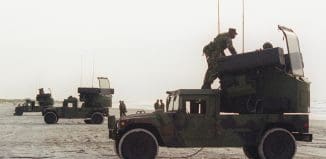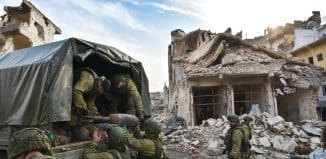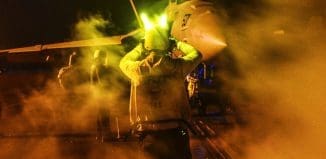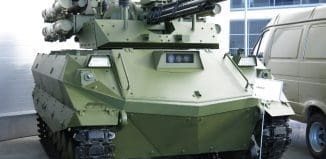The cost of the U.S. strike against Syria
This post is also available in:  עברית (Hebrew)
עברית (Hebrew)
 Even before the launch of a single cruise missile against a Syrian target in Washington the calculators are working full time to determine the price of the U.S. action.
Even before the launch of a single cruise missile against a Syrian target in Washington the calculators are working full time to determine the price of the U.S. action.
A cruise missile strike against Syria could cost the Pentagon hundreds of millions of dollars in weapons, according to experts and government documents.
According to Defense News, since any type of U.S. military action is expected to last just a few days, the price tag would be similar to costs accrued during the early days of the 2011, five-month NATO operation to overthrow Libyan leader Moammar Gadhafi, defense analysts say.
The first few weeks of the Libyan operation cost the U.S. about $600 million. About $340 million of that was directly was to replenish munitions, specifically sea-launched Raytheon Tomahawk cruise missiles and air-launched Boeing Joint Direct Attack munitions, according to a Congressional Research Service report.
Tomahawk Land Attack Missiles (T-LAMs) cost about $1.4 million each, according to government budget documents.
But unlike the Libyan mission, there has been little talk of establishing a costly no fly zone over Syria.
The U.S. and its allies appear to be planning for a limited strike against the Syrian government, which Western nations claim has used chemical weapons against civilians.
iHLS – Israel Homeland Security
The US Navy has four destroyers in the eastern Mediterranean Sea, each with up to 96 missile cells — although experts say these ships are rarely loaded with a full complement of these types of weapons.
Missile-armed submarines are also likely to be in the area, although the US would not confirm their presence. Several submarines, including one SSGN missile sub armed with a capacity of 154 missiles, took part in the Libyan campaign. That submarine, the Florida, reportedly launched as many as 99 Tomahawks at targets in Libya in March 2011 alone.
At least one British submarine also launched missiles against Libyan targets.
Command-and-control and intelligence aircraft — such as E-3 AWACS Airborne Warning and Control System and E-8 JSTARS Joint Surveillance Target Attack Radar System — which would likely support any type of strike on Syria, could also add to the price tag. During the first 10 days of the Libya operation, the US spent about $1.6 million on these types of missions.
Support from aerial refueling tankers would also add to the cost. During the first weeks of the Libya operation, US Air Force tankers flew for more than 800 hours, costing $9.3 million.






























